mini Mini-Make
Follow projectHow do you feel about this article? Help us to provide better content for you.
Thank you! Your feedback has been received.
There was a problem submitting your feedback, please try again later.
What do you think of this article?
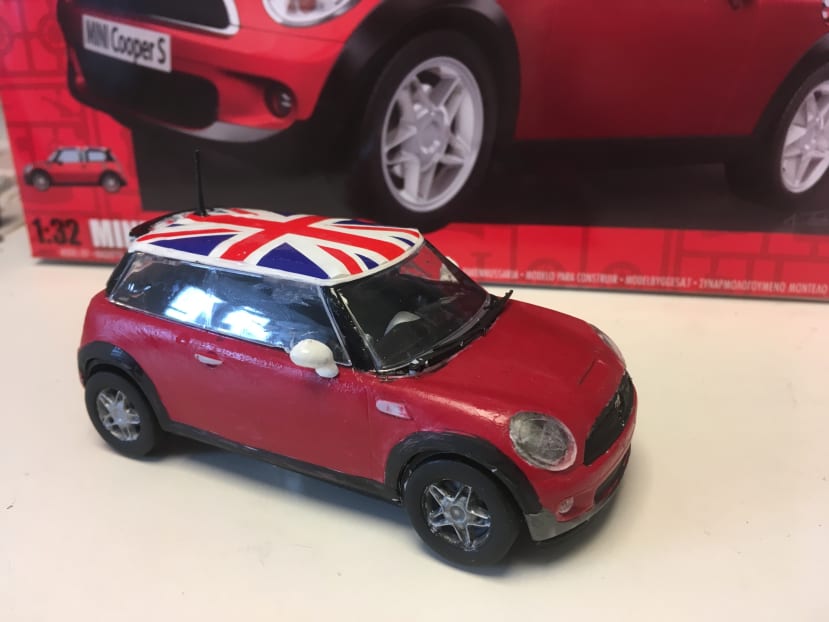 Modded Mini Cooper - to become a nightlight - its headlights automatically come on when it is dark.
Modded Mini Cooper - to become a nightlight - its headlights automatically come on when it is dark.
Parts list
| Qty | Product | Part number | |
|---|---|---|---|
| 2 | 2 yellow casing LEDs | ||
| 1 | Mini Cooper S 1:32 Scale Gift Set | ||
| 1 | Light dependent resistor | ||
| 1 | 330R resistor | ||
| 1 | 1KR resistor | ||
| 1 | CR2032 Battery Case | ||
| 1 | CR2032 Battery | ||
| 1 | Transistor | ||
What better mini-make than to make a Mini! I wanted to hack an Airfix Mini Cooper and make it into a night-light - with the headlights coming on automatically.
I've never made an Airfix model (I think my parents knew my patience level as a child). So I chose the easiest skill level and a starter set - which I thought included everything I needed paint, cement and paintbrushes:
I read the instructions (yes, I do that).
Here are the things I wished it had said or wished I knew before I started:
- Prime all the parts first. Priming was not mentioned on the included instruction sheet. I can understand the kit is sold for 8-year-olds, and primer and 8-year-olds don't always mix well. But a comment about it would have been good.
- Acrylic paints are often best used watered down - use a palette (e.g. margarine tub lid) to mix the water and paint.
- Use wet and dry sandpaper to rub down the paint between coats.
- If the instructions indicate that a lot of items are cemented together AND are the same colour, cement first, then paint them together.
- Push fit the parts before you get the glue out.
- The project will take longer than you imagine.
Other bonus ideas:
- Use an airbrush or spray paints for large blocks of colour
- Get a lot of swear words ready for the application of transfers
- There are a lot of hints and tips at https://www.airfix.com/uk-en/support/tips/
- Varnish the finished product to protect it.
But because I didn't know those things I started as per the instructions ...
The first dilemma - paint on the sprue (the channels which the plastic is poured into the mould or assemble first - I chose to paint on the sprue due to the fiddly-ness of the parts.
I was very disappointed with my first attempts.
Paint too thick:
Lack of primer:
So I rubbed down with wet and dry and tried again:
There were a LOT of parts. And most needed a few coats (due to me not using a primer!). The painting process took me 12 days. Yes, TWELVE. OK, sometimes I only did 5 mins a day. But 12?!!
Eventually, it was assembly time ...
I needed to scrape a lot of the paint off so that it would stick.
Applying transfers is a skill set all of its own - and may require a magnifying glass:
Because I wasn't sure how much space I would have inside for batteries, I made up most of the model before starting the electronics. I eventually realised there was hardly any space, so I decided on a CR2032 3V button cell battery stuck on the bottom of the car.
Underneath:
Wires through the body:
Once I knew which battery I was using, I could make up the circuit ...
Note to self: When your circuit does not work as expected, check that you have used a 330-ohm resistor, and not actually a 330K ohm resistor. #LucyFail
For the LEDs I used (which were random yellow ones I found in my box of electronics), and a 3V battery, R1 was 330 ohms and R2 was 1000 ohms. The Light Dependent Resistor (LDR) was also a random one found in my electronics box. The Transistor was NPN.
I discovered the LDR fits nicely in the grill ...
I then made the wiring loom ...
And hot melt glued it in place ...
Getting it all to fit was fun ...
But I did it!
I then finished the build (headlight lenses, more transfers, painting more fiddly bits ...)


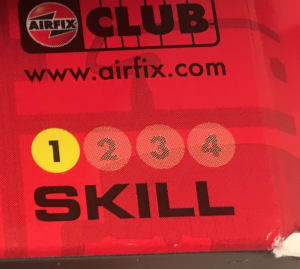
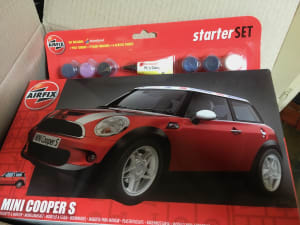
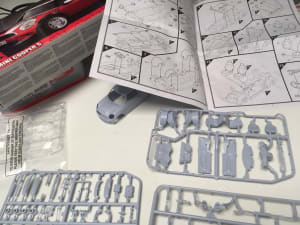
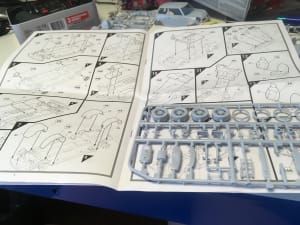
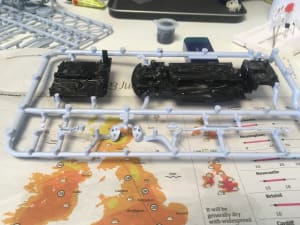
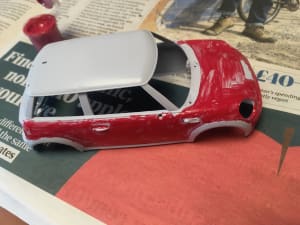
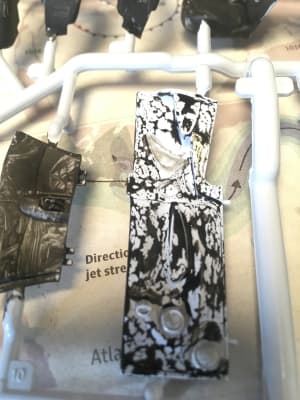
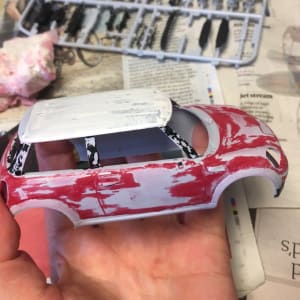
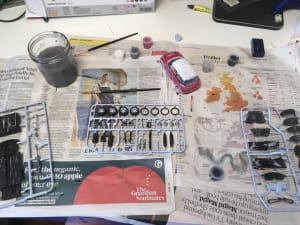
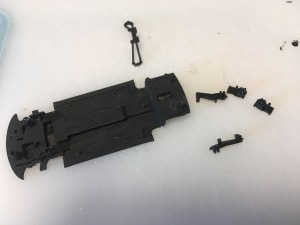
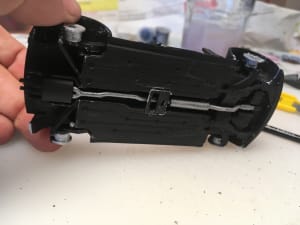
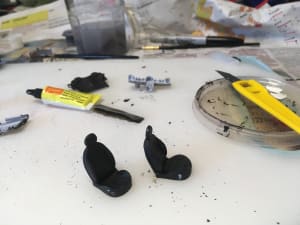
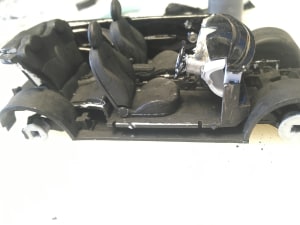
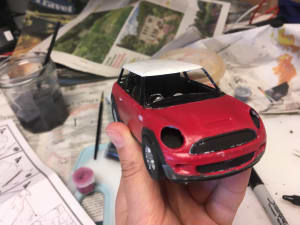
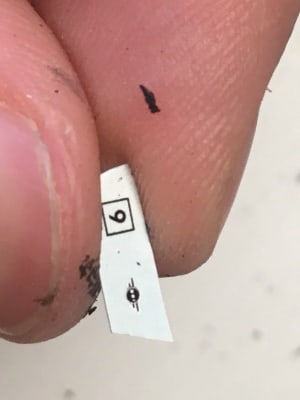
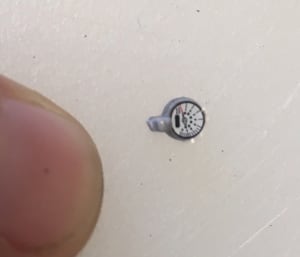
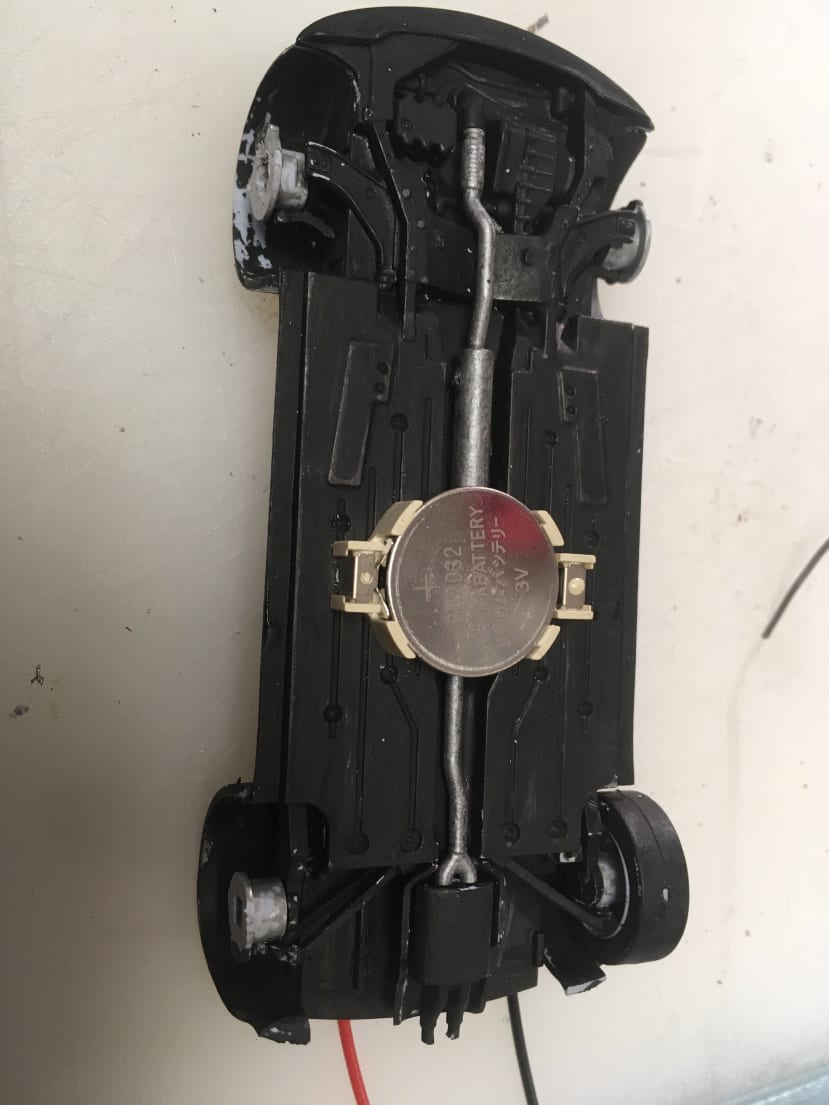
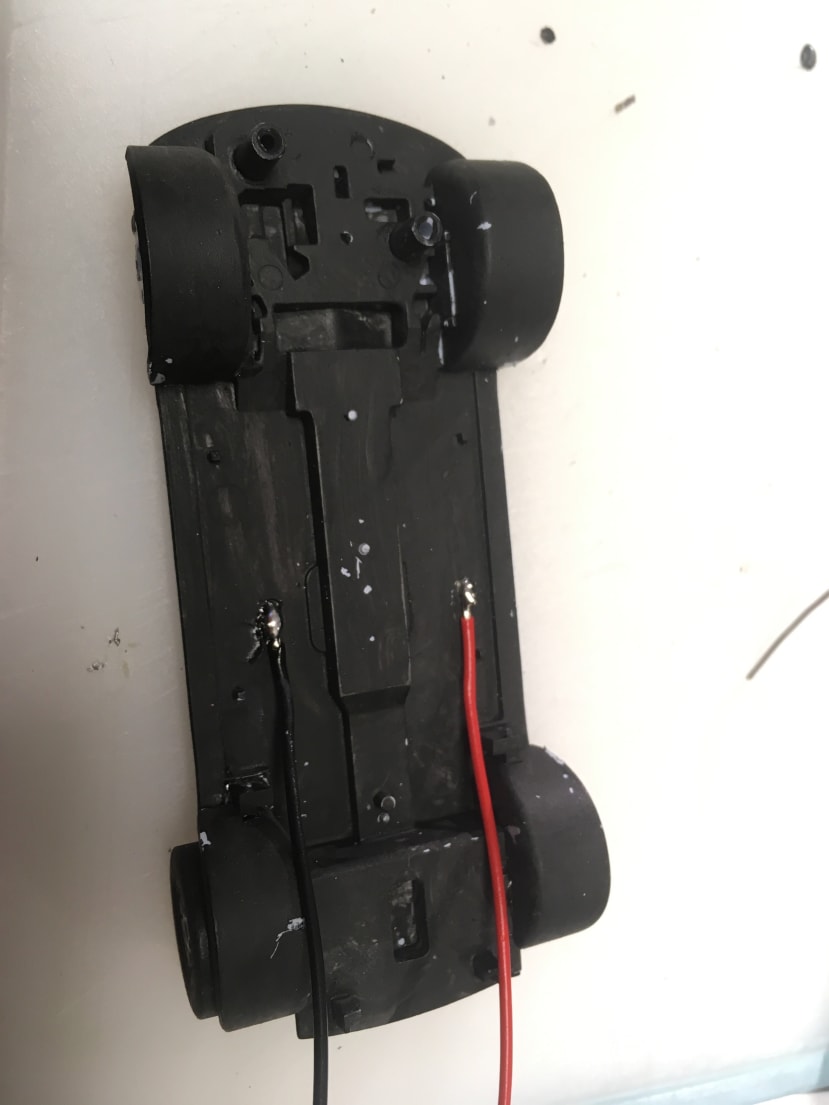
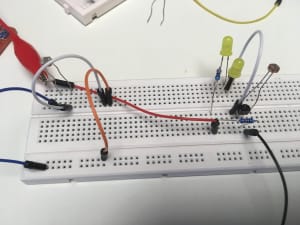
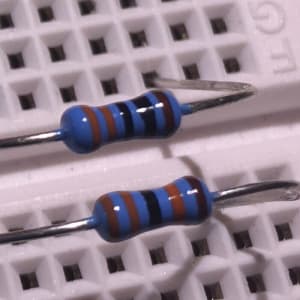
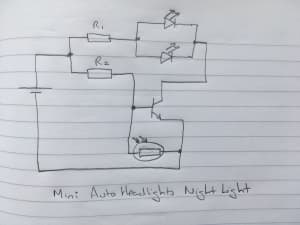
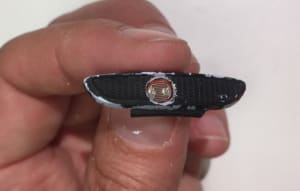
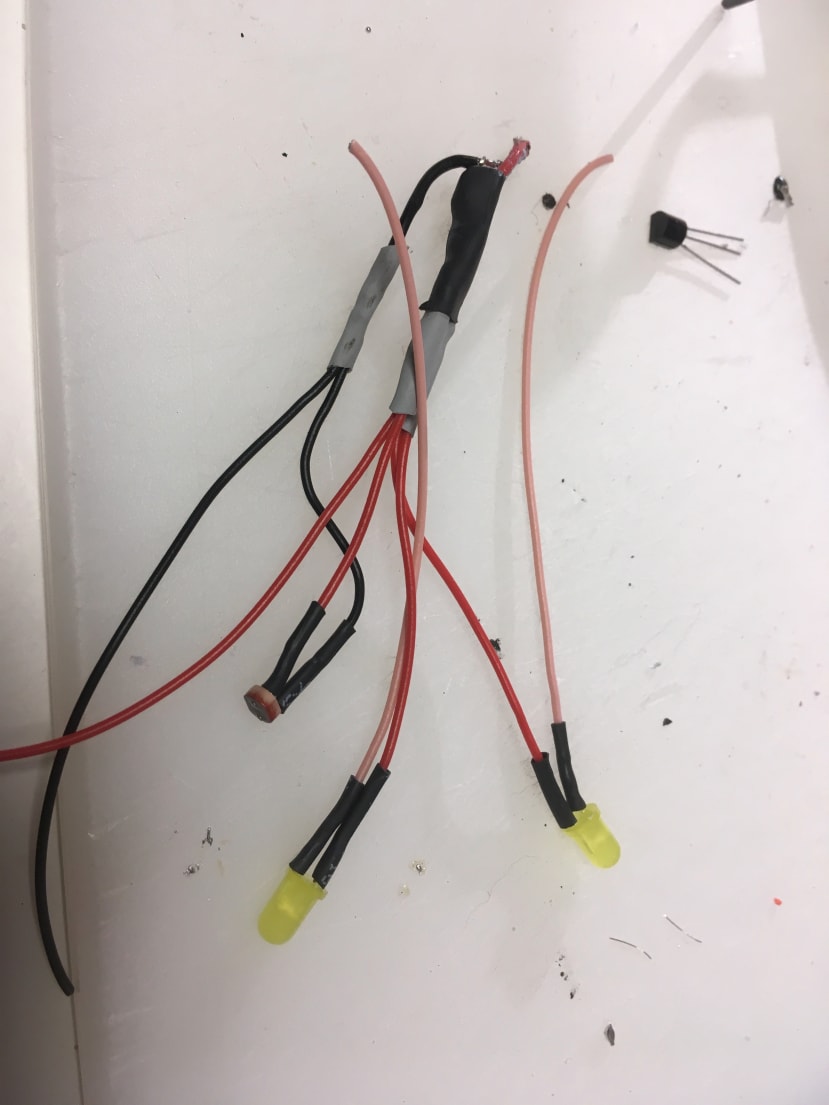
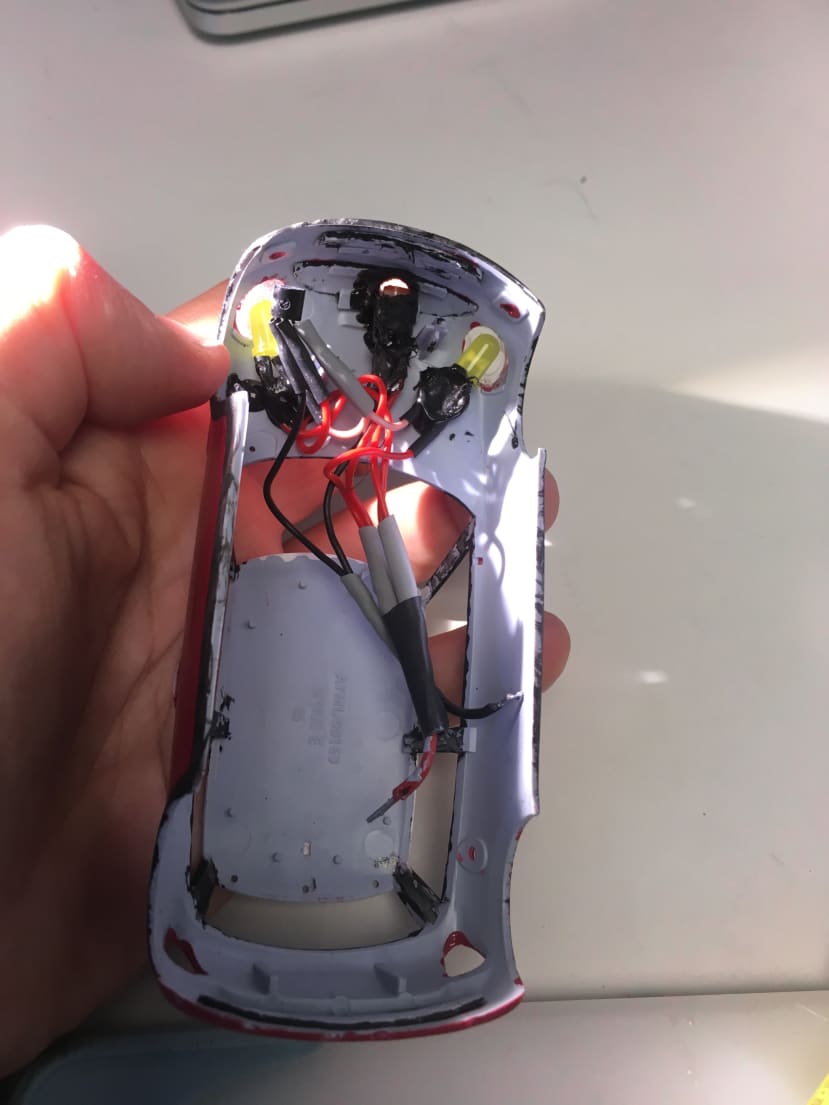
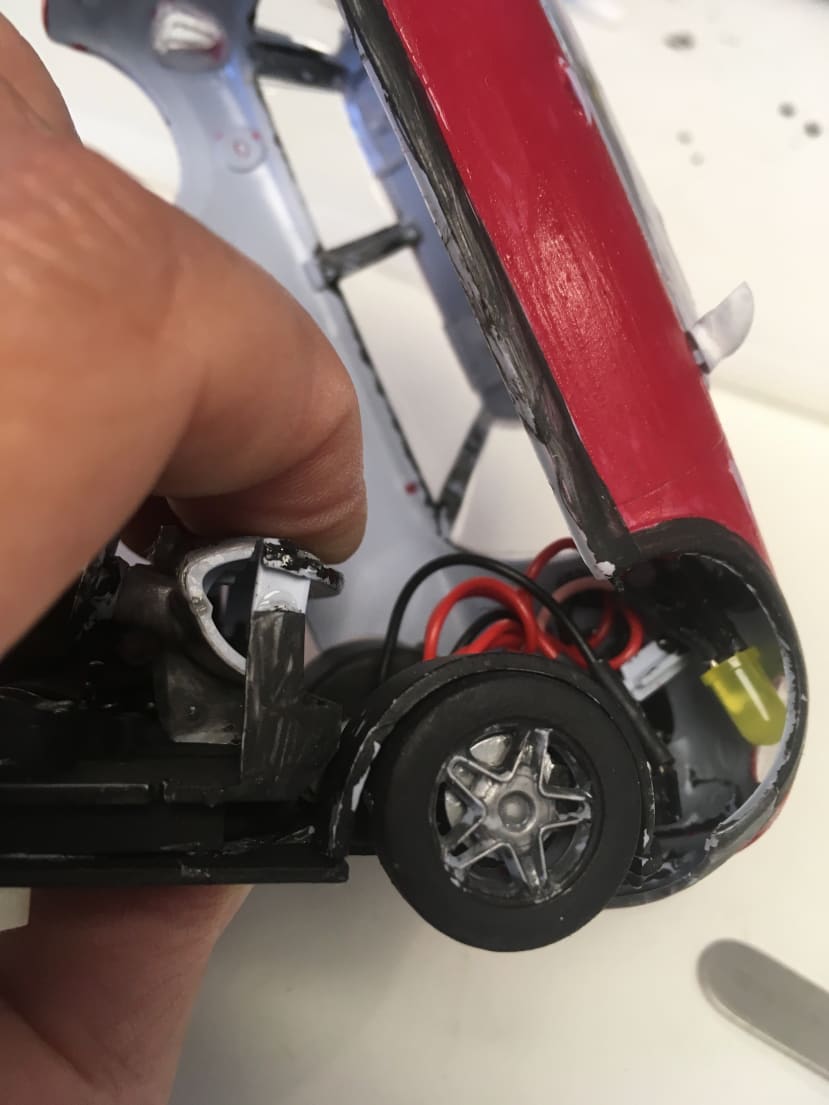
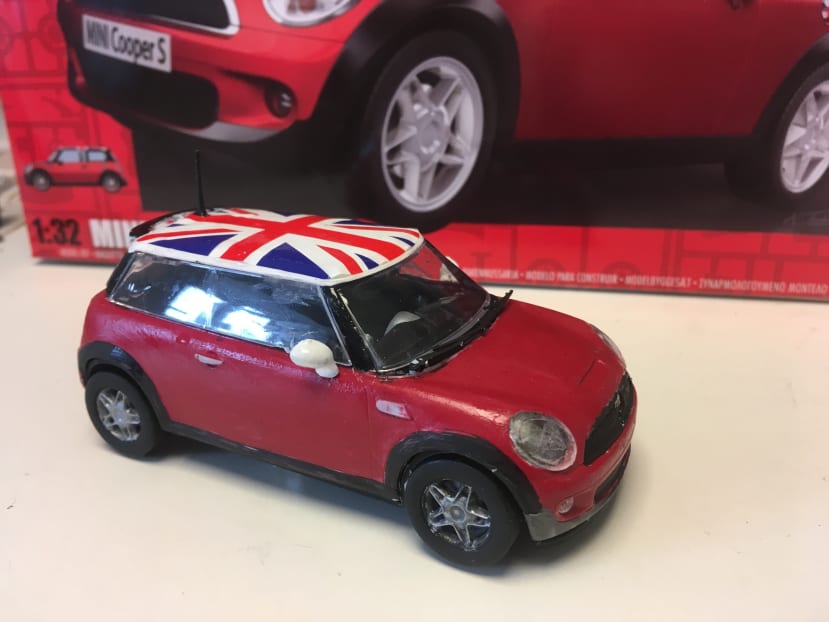
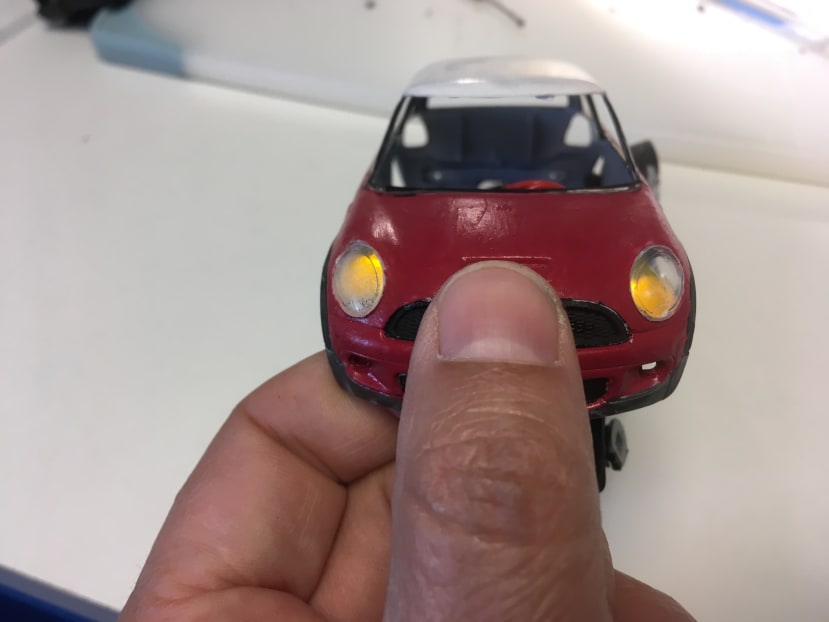
Comments